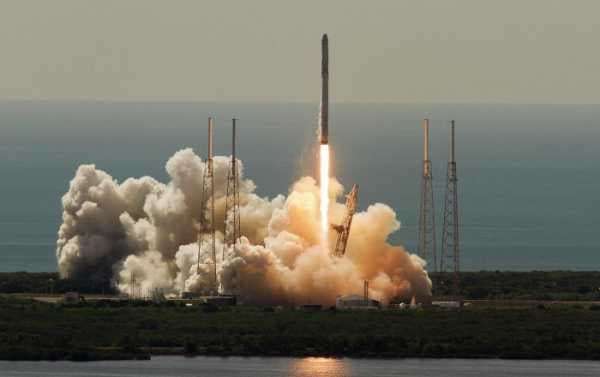
SpaceX is planning to launch a Falcon 9 rocket next week with 71 small satellites on it. The entire rocket was bought out by Spaceflight Industries, a company that bills itself as a ride sharing company for spacecraft.
Dubbed the “SmallSat Express,” the upcoming mission, which is scheduled to launch from Vandenberg Air Force Base in California at 1:32 p.m. EST Monday, will put 71 small satellites for 35 different companies and organizations, ranging from 11 pounds to 660 pounds each, into sun synchronous orbits.
Typically, small satellites like these have to hitch a ride on larger missions that have the extra room for them, but Spaceflight bought the space of this entire vehicle payload back in 2015 and has stacked up the manifest with every little probe it can find that needs to get into orbit. The Verge reported back in August that there are 15 microsatellites and 56 smaller standardized satellites called CubeSats. The vast majority are commercial in nature, with several coming from educational institutions and two being art exhibits.
The Verge reported that deployment of the satellites in an orderly and safe manner will be almost as great a feat as the launch itself: it’ll take between six and eight hours to put them all into their own orbits once the payload is in space. The satellites are strung together, like crab pots on a rope, and stacked one on top of another so that they jettison one by one at the right time.
“Probably the biggest technical challenge is sequencing all of the spacecraft off the payload stack,” Curt Blake, president of Spaceflight’s launch services group, told The Verge. “When you sequence that launch, you have to do it in a well thought out and organized way, so you don’t end up having spacecraft coming back, contacting each other, and causing space debris. We spent a lot of time modeling that and tinkering with the sequencing to make sure it all comes off without recontact.”
Three satellites of note are the Pathfinder satellites, a trio of microwave oven-sized probes owned by HawkEye 360 that will detect radio signals down on Earth to help track so-called “dark ships,” or vessels that turn off their GPS location transponders, in order to hide their whereabouts and engage in illicit activities, Business Insider explains.
Such activities include illegal fishing, smuggling, drug trafficking and piracy, which together amount to nearly $3 trillion in business each year, CEO John Serafini told the publication.
NASA reported late last month that SpaceX, a commercial space flight company owned by industrialist Elon Musk, had planned five more launches before 2018 is over, which will bring its launch total for the year to 22.
Expected to make a return for the SSO-A launch is a new project being tested by SpaceX: a fairing recovery ship dubbed “Mr. Steven,” which will attempt to catch and recover parts of the Falcon 9 rocket as they fall back to Earth after detaching during launch. NASA reported the ship had been spotted in recent weeks doing drop tests to catch dummy pieces with its huge net.
SpaceX has long shown an interest in reusing portions of its spacecraft, although it finally gave up its plans for landing Falcon 9 rockets back in September, Sputnik reported. The three largest and most expensive components of the rocket are its first and second stages and payload fairing. The fairing is a two-part nose cone that’s jettisoned after takeoff, when it’s no longer needed to protect the spacecraft from the extreme stresses of launch.
Florida Today noted that, while it’s not the most expensive piece of equipment, the fairings still cost around $6 million per mission.
“Would you try to recover that?” Musk mused last year, noting it was basically like letting a pallet of $6 million plummet into the sea. “Yes, you would.”
Sourse: sputniknews.com






